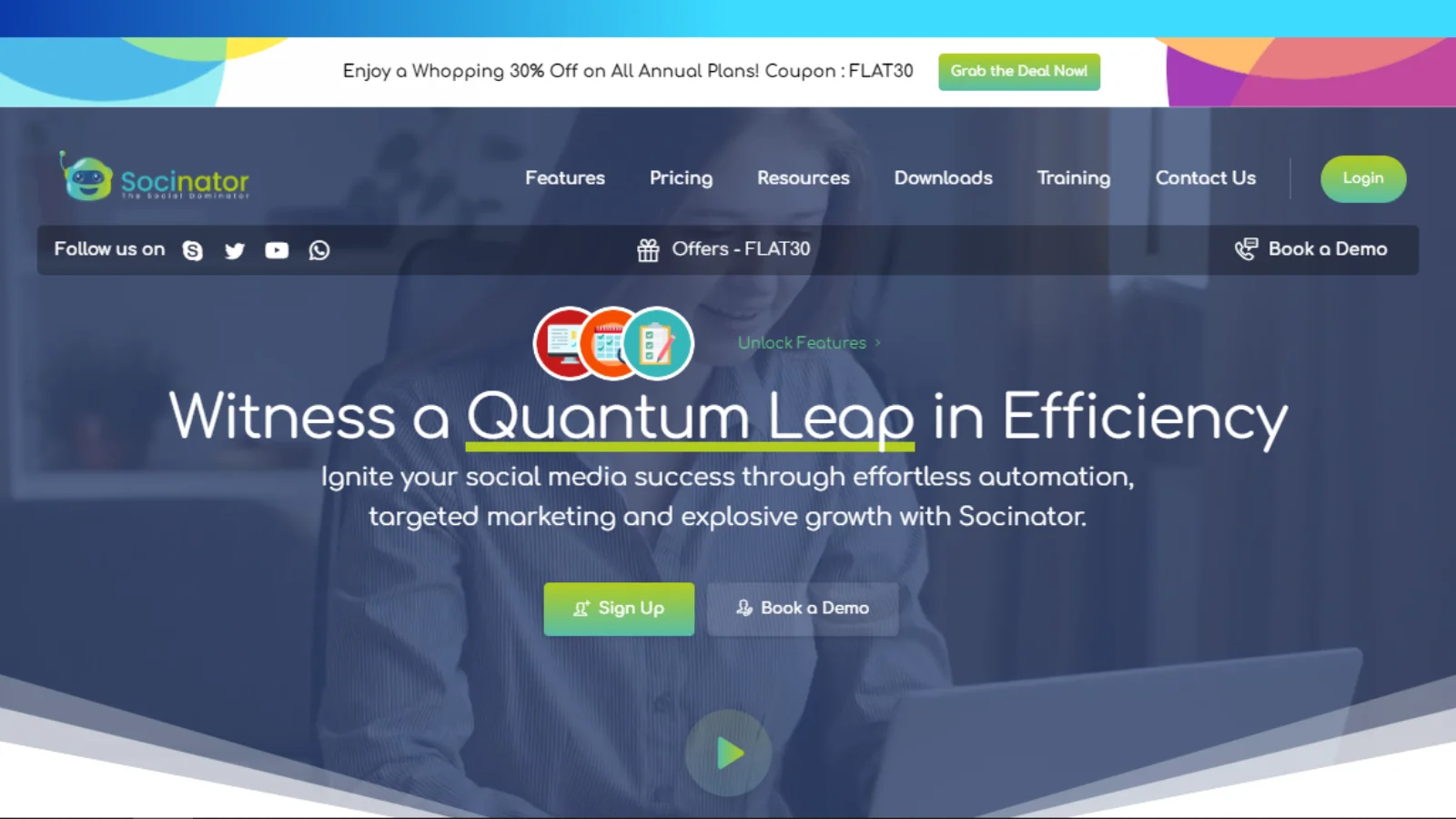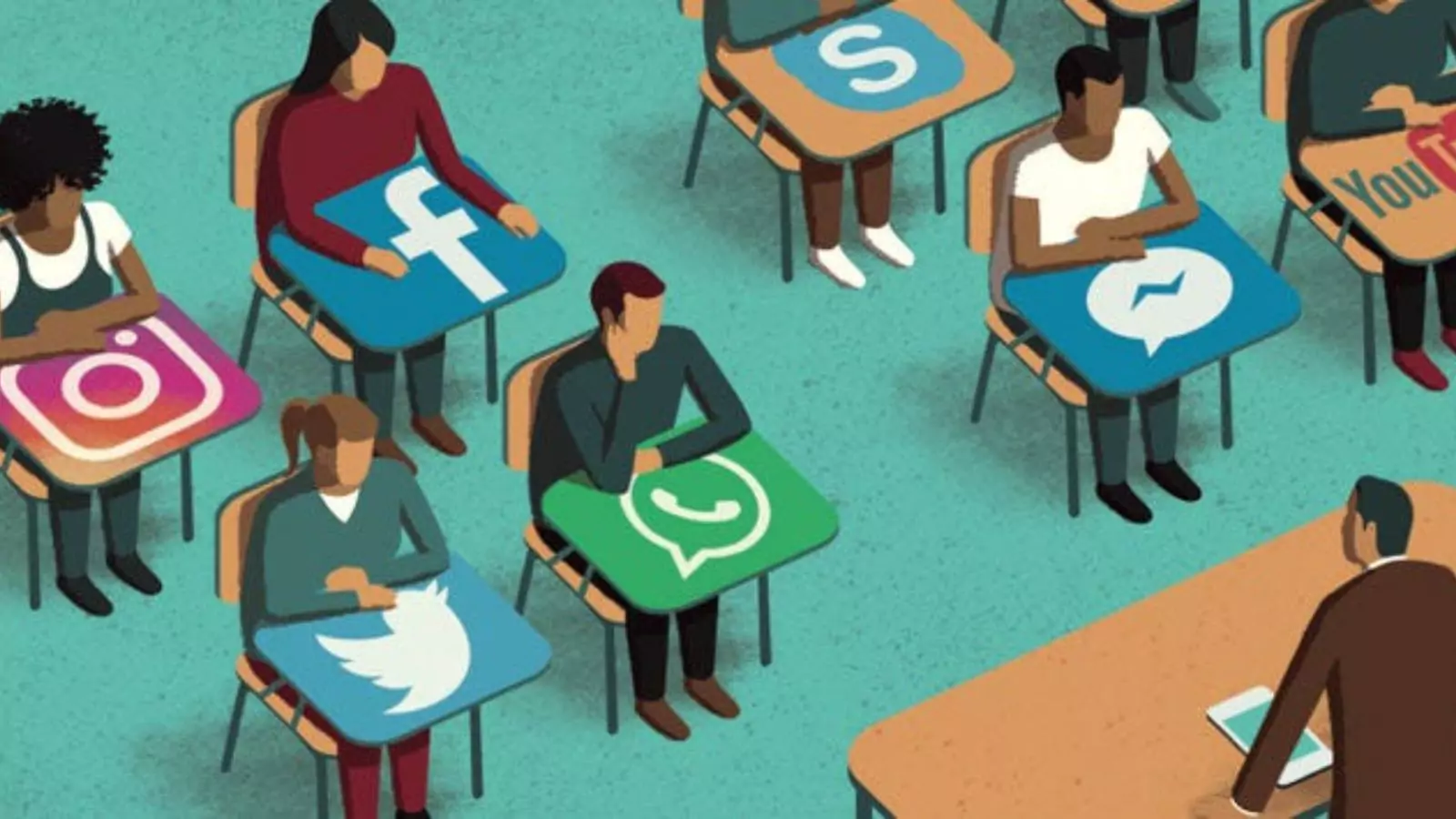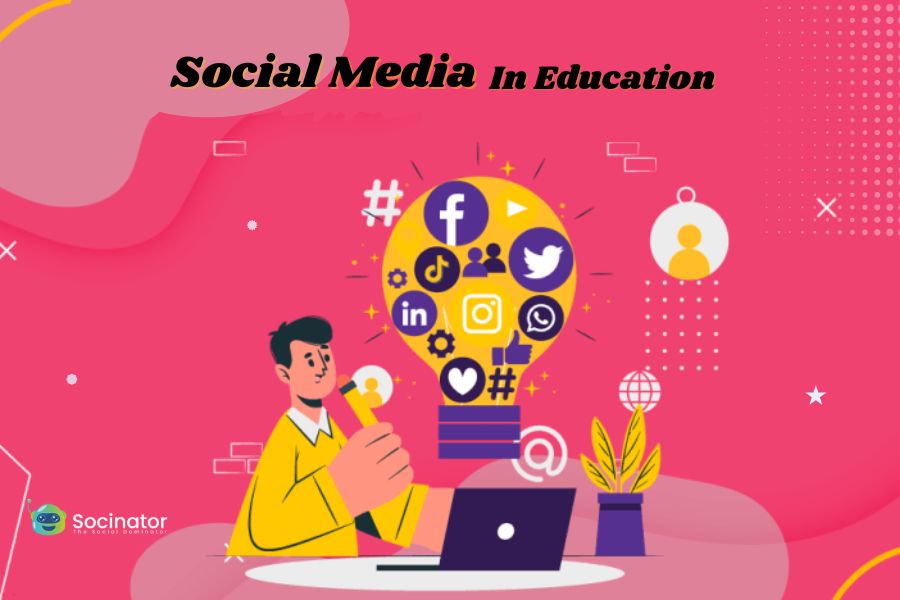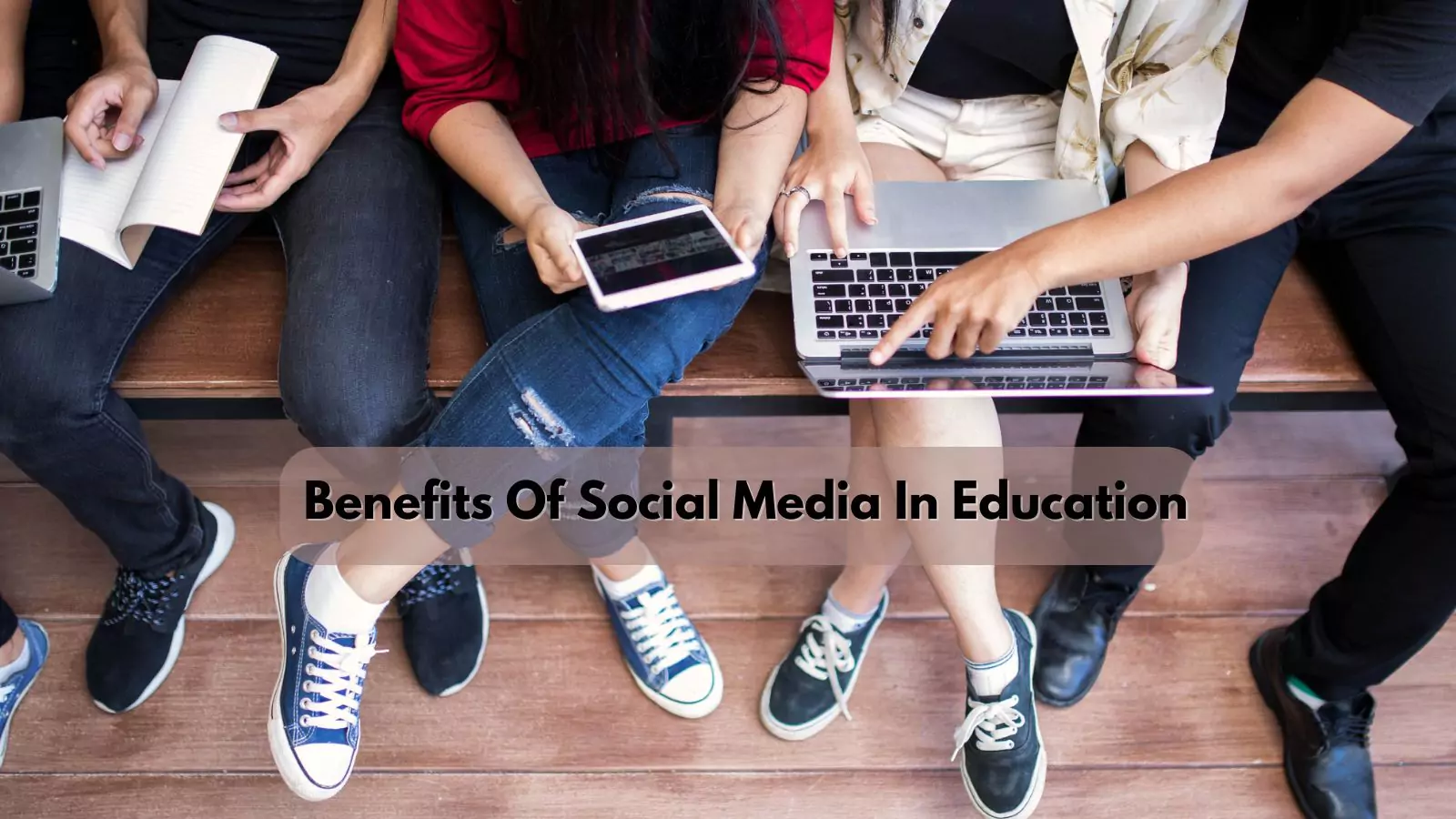Social media has transformed how we connect and communicate, impacting both our personal and professional lives. Educators and school administrators have recognized the immense potential of incorporating social media in education.
Numerous educational institutions are incorporating social media advancements into their systems to enhance students’ lives. Integrating social media in education allows students, teachers, and parents to easily- access valuable information, connect with various learning communities, and gain insights into different educational systems.
Recognizing the value of social media, forward-thinking educators have started to embrace its benefits.
In this blog we will delve into the 9 ways you can use social media in education and how it can positively impact students’ learning experiences and lives. So, without further ado, let’s dive in!
Hit ‘Play’ Button & Tune Into The Blog!
What Is The Use Of Social Media For Education?
Integrating technology into the classroom is now easier than ever- due to students’ familiarity with various social media platforms. Social media can be used in numerous ways to enhance the learning experience, such as disseminating notifications and conducting live lectures.
For teachers, parents, and students, social media can facilitate communication, host question-and-answer sessions, and provide a platform for grading and commenting on student work.
Additionally, social media in education allows students to gain experience in remote collaboration. In today’s increasingly digital society, students must develop the ability to work independently and adapt quickly to new environments.
Before incorporating social media into classroom teaching, there are many important considerations to remember. However, using social media can help students develop better technological skills.
For example, using social media in a mechanical engineering degree shows how these platforms can connect different fields and make learning more diverse. They foster collaborative learning, provide industry insights, and facilitate professional networking within technical social media education.
The Benefits Of Social Media In Education
The benefits of social media in education are impactful. One of the most significant advantages is increased engagement. As any educator understands, engagement is fundamental to student success. When students actively participate in learning through social media platforms, they tend to grasp concepts more effectively.
Moreover, the accessibility of most social networking sites and resources at no cost is a major advantage. It is particularly beneficial for educators working with limited budgets for materials and resources.
Let’s explore a few more benefits of integrating social media in education.
- Enhanced Engagement and Motivation: Social media platforms enable students to connect and their teachers beyond the confines of the classroom. It fosters a sense of community and can spark a deeper interest in the subject, leading to heightened engagement and motivation.
- Fosters Collaborative Learning and Teamwork: Social media platforms provide avenues for student collaboration and teamwork. It fosters the development of problem-solving and communication skills as students work together to tackle challenges and share ideas.
- Facilitates Personalized Learning Opportunities: Social media offers opportunities for personalized learning by granting students access to diverse resources and educational content tailored to their individual needs and interests. This flexibility enhances the learning experience and promotes self-directed learning.
- Improves Student-Teacher Communication: Social media platforms facilitate communication and interaction between students and teachers. This open communication channel fosters a supportive learning environment and enables teachers to provide timely feedback, ultimately enhancing student learning outcomes.
- Provides Access to Global Educational Resources: Through social media, educators can leverage a wealth of global resources to enrich their students’ learning experiences. This exposure to diverse perspectives and knowledge fosters a more interconnected and globally aware learning environment.
- Network Building Through Social Media: Social media platforms, particularly LinkedIn engagement, offer students a simplified pathway to build professional networks. Educational institutions often have a presence on LinkedIn, enhancing students’ networking opportunities on social media in education. With the assistance of automation tools like Socinator, this networking journey- can be streamlined. Socinator’s automated messaging and content scheduling features enable students to connect with professionals while balancing academic commitments efficiently.
Socinator: Social Media Automation Tool
 It is powerful and versatile software designed to streamline social media management tasks, enhance efficiency, and maximize online presence for individuals and businesses alike. With the ever-growing importance of social media in today’s digital landscape, Socinator emerges as a comprehensive solution to navigate- the complexities of multiple platforms seamlessly.
It is powerful and versatile software designed to streamline social media management tasks, enhance efficiency, and maximize online presence for individuals and businesses alike. With the ever-growing importance of social media in today’s digital landscape, Socinator emerges as a comprehensive solution to navigate- the complexities of multiple platforms seamlessly.
Here are the key features of Socinator:-
Multi-Platform Integration: Socinator supports- various social media platforms such as Facebook, Instagram, Twitter, LinkedIn, Pinterest, YouTube, and more. This integration enables users to manage all their accounts from a single dashboard, saving time and effort.
Automated Posting: One of the standout features of Socinator is its ability to schedule and automate posts across different platforms. Users can plan their content calendars, ensuring consistent and timely updates without manual intervention.
Audience Engagement: Engaging with followers is essential for building a loyal audience base. Socinator offers automated likes, comments, follows, and direct messages, allowing users to interact with their audience effectively and maintain active engagement.
Analytics and Insights: Monitoring performance metrics is crucial for assessing the effectiveness of social media strategies. Socinator provides detailed analytics and insights on engagement, reach, demographics, and more, empowering users to make data-driven decisions to optimize their campaigns.
Socinator emerges as a valuable asset for individuals and businesses seeking to streamline their social media management efforts, enhance their online presence, and achieve their marketing objectives effectively and efficiently in the dynamic world of social media.
9 Ways You Can Use Social Media In The Classroom
 Social media provides many chances for teachers and students to learn and grow. It’s a useful tool for improving digital skills and critical thinking. Plus, it can help promote your class, school, and yourself.
Social media provides many chances for teachers and students to learn and grow. It’s a useful tool for improving digital skills and critical thinking. Plus, it can help promote your class, school, and yourself.
Here are nine easy ways to use social media in education:
Utilize a Campaign to Attract Fresh Students
One effective use of social media in education is to draw in new students to your school or course. For instance, if you’re aiming to boost enrollment, you can launch a social media campaign showcasing the advantages students would enjoy from your program.
Consider initiating a campaign to generate interest in your program a few weeks ahead of its start date. In your campaign, you might:
- Employ scarcity and urgency tactics (“50% sold out already!”)
- Provide a discounted rate for early registrations
- Tease the benefits students will receive from the course
Create A Community
For educators conducting virtual classes or maintaining connections with alumni globally, forming an online community becomes crucial.
Communities come in various shapes. Private Facebook Pages serve well for class discussions, while public hashtags help boost significant content.
For enhancing student engagement, a Facebook Group or Page proves to be a seamless fit. It allows members to converse about the course, share queries and feedback, and bond over common experiences.
Share Updates and Notifications
Many educational institutions utilize internal communication software for sharing alerts with students, but these platforms are frequently criticized for their cumbersome technology and slow performance. This is why students often find it more convenient to check Twitter, now X, for real-time updates. By posting class updates on social media in education, students can easily access them from their devices at any time. Social media serves as an effective tool for clubs and instructors to keep their communities informed.
Moreover, social media can be used to broadcast information to a larger audience, whether it’s the entire student body or the broader community. Sharing significant announcements on social media ensures that news reaches a wider network more quickly.
Stream Your Lectures Live
Looking to broaden your audience or enhance content accessibility? Consider livestreaming your lectures through platforms like Facebook, Instagram, or YouTube.
Online lectures enable students to access content independently and at their convenience. For those facing challenges attending classes, these online sessions prove invaluable. Students can revisit lectures as necessary to grasp the material fully.
Moreover, livestreaming your lectures opens doors to a broader audience. Students from different institutions or countries can tune in and learn, extending the reach of your expertise through open access.
Emphasize Digital Literacy Development
Social media offers a plethora of opportunities, from job hunting to skill development and networking with potential employers.
However, it’s crucial to recognize that social media has a lasting memory. Once something is posted online, it’s often retrievable.
This underscores the importance of digital literacy. Students need to learn how to use these tools responsibly and effectively.
As an educator, you play a vital role in helping students acquire these essential skills.
Encourage User-Generated Content
User-generated content (UGC) on social media in education refers to content created by regular individuals rather than brands. Your students likely create content already, so why not encourage them to post about the topics you’re teaching? You could incentivize their participation with a grade boost or offer it as bonus work.
For better outcomes, provide your students with guidelines. Instead of simply saying, “Post about class and get a free homework pass,” establish parameters. For instance, create a relevant hashtag for them to use or specify that they can earn bonus points on an assignment by posting a photo of themselves working on it.
Design Opportunities for Active and Passive Learning
As an educator, you likely employ a blend of active and passive learning techniques.
Active learning necessitates students’ active involvement in the lesson, often through discussions, challenges, or debates. You can further engage students by assigning tasks such as creating photo or video essays to be shared on social media platforms like Instagram, YouTube, or TikTok.
Passive learning involves learners absorbing information through listening or reading and then reflecting on or applying that knowledge. In a traditional classroom setting, this might involve lectures and note-taking.
Social media in education offers opportunities for both active and passive learning. For instance, you might lecture students on the topic of misinformation on a particular platform and then task them with identifying and fact-checking a misleading tweet. This exercise encourages students to critically examine data and provide evidence to support their conclusions.
By combining active and passive learning approaches, students not only absorb information but also actively engage with and apply what they’ve learned, fostering deeper understanding and retention.
Teach Networking and Leadership Skills
In today’s increasingly globalized and competitive professional landscape, it’s crucial to educate students on cultivating networking abilities and establishing themselves as thought leaders.
Encouraging students to set up LinkedIn profiles and engage with other professionals enables them to:
- Gain insights into relationship building and maintenance.
- Identify potential mentors who can guide their career paths.
- Craft and enhance their brand.
An effective social media strategy involves promoting workshops on social media platforms. Workshops serve as invaluable platforms for students to network, acquire new skills, and formulate informed perspectives on various topics.
Celebrate Student and Alumni Successes
In higher education, alumni relations play a vital role in your social media approach. A great way to involve both current and former students is by sharing updates on their achievements and post-graduation journeys. This not only rekindles alumni connections and instills pride in current students but also showcases your institution’s accomplishments to the broader community.
By implementing these ten strategies, educators can harness the power of social media in education to enhance teaching and learning experiences, foster digital literacy, and prepare students for success in their academic and professional pursuits. Through active engagement, thoughtful communication, and celebration of achievements, the educational community can thrive and continue to evolve in the digital age.
Read More,
How To Boost Your LinkedIn Engagements: 8 Helpful Tips
11 Social Media Marketing Ideas for Non-Profit Charity Organizations
Drawbacks Of Integrating Social Media In The Classroom:
While social media holds potential as an educational tool, it also poses various challenges that must be addressed.
Here are some common drawbacks of integrating social media in education, along with strategies to mitigate them:
- Distraction: Social media can divert students’ attention from learning. Educators can counter this by establishing clear guidelines on social media usage during class and implementing measures like restricting access to certain platforms.
- Cyberbullying: Social platforms can be breeding grounds for cyberbullying, harming students’ mental well-being. Educators can tackle this issue by promoting responsible social media use and implementing protocols for reporting and addressing cyberbullying incidents.
- Privacy and security concerns: Students’ personal information and online activities may be vulnerable on social media. Educators can address this by educating students on online privacy and security practices and encouraging them to use strong privacy settings and passwords.
- Inappropriate content: Social media may expose students to unsuitable content. Educators can mitigate this risk by utilizing content filtering tools and monitoring social media activity to ensure students are not exposed to inappropriate material.
- Lack of access: Not all students may have access to social media platforms, leading to disparities in learning opportunities. Educators can provide alternative communication and collaboration methods for students without social media access, such as email or online forums.
Wrapping Up
The connection between social media and education is full of exciting learning opportunities. Social media helps students and teachers work together, share ideas, and access different viewpoints and resources easily. Social media automation tools like Socinator make managing social media easier for educators, letting them schedule posts and communicate with students more efficiently.
However, using social media in education requires careful thinking about privacy, online safety, and knowing how to use digital tools. As technology keeps changing, educators can use social media in new ways to make learning more fun and engaging.
Let’s embrace these innovations and use social media wisely to create dynamic learning environments that inspire creativity and critical thinking.
FAQs
Q. What is social media in education?
Social media in education refers to the integration of social networking platforms and tools into educational settings to facilitate learning, collaboration, communication, and engagement among students, educators, and other stakeholders.
Q. Should students use social media?
Social media can enhance social skills as students interact with peers and acknowledge each other’s strengths. It also fosters acceptance and helps in forming connections through various audio and video tools.
Q. How can social media be used effectively in the classroom?
To use social media effectively in the classroom, educators should establish clear guidelines for its use, promote active participation among students, provide valuable content that supplements classroom learning, facilitate collaboration on projects, and monitor social media activity to ensure compliance with guidelines and address any issues that may arise.
Q. Are there any benefits of social media for students?
Social media offers students a platform to express themselves and share their opinions. It also facilitates global communication, enabling students to learn from peers and diverse perspectives worldwide.
Q. How can I ensure students’ safety on social media?
To protect students’ privacy, keep class-related social media accounts private or invitation-only. Encourage students to set their accounts to private or create new class-specific profiles. Educate students on online etiquette and establish consequences for cyberbullying. The socinator tool offers an Account Security feature to enhance safety measures further. Maintain professional boundaries online and consider granting parents access to monitor their children’s activities.







